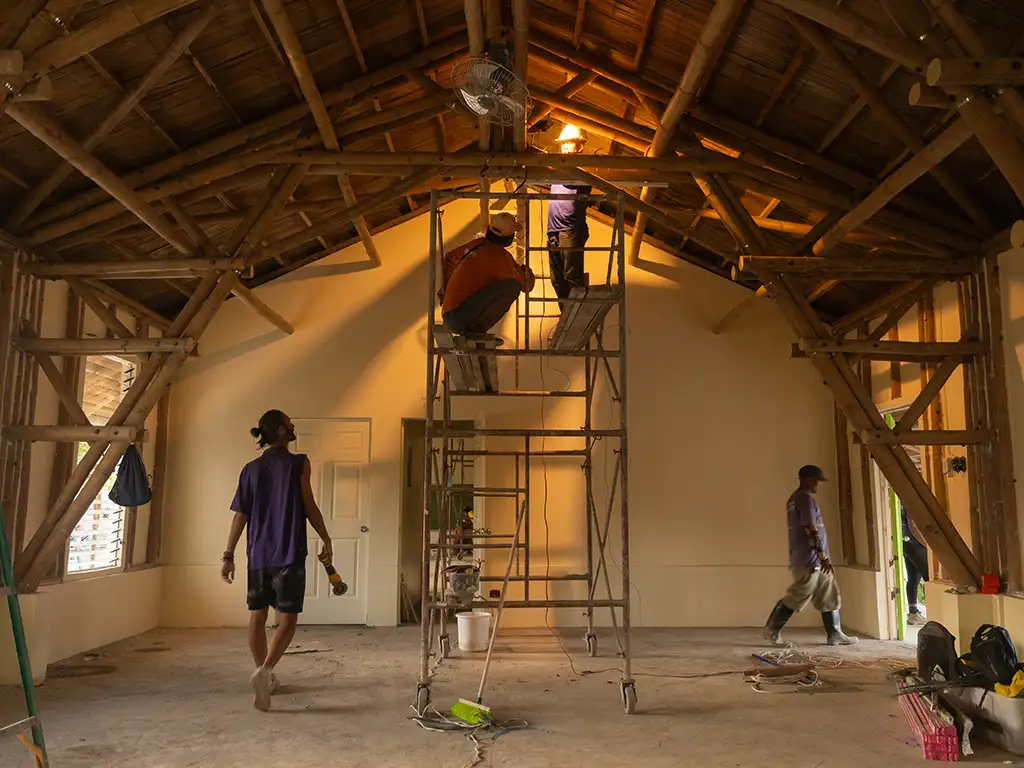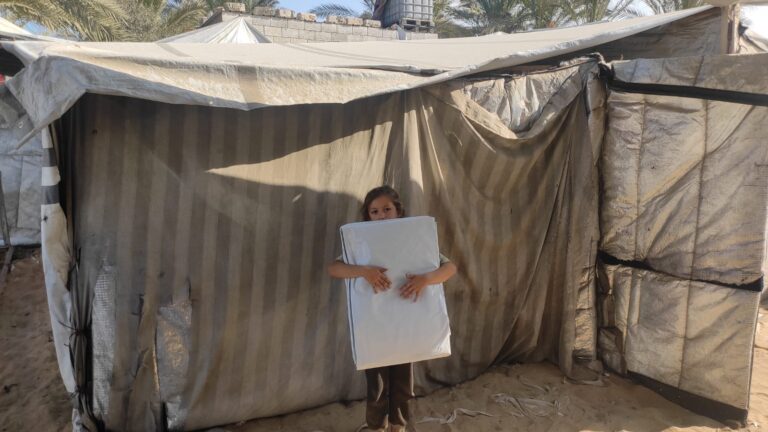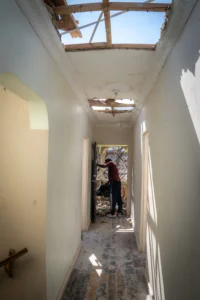Imagine if each year, you were faced with a tropical cyclone that had the potential to cause devastating damage to your home, leaving you with months of reconstruction, displacing you and your family. For those living in the Philippines, these occurrences can be commonplace as they endure not one, but 20 cyclones on average each year.
Since 2007, All Hands & Hearts (AH&H) has helped Filipino communities recover from multiple typhoons, particularly focusing on rebuilding educational structures. AHAH’s school rebuild at St. Francis School in the Philippines includes building four disaster-resilient classrooms for 82 children using bamboo and partnering with local organizations to ensure sustainable building techniques.
But why is bamboo so important? And why should we be promoting the use of this material in other areas?

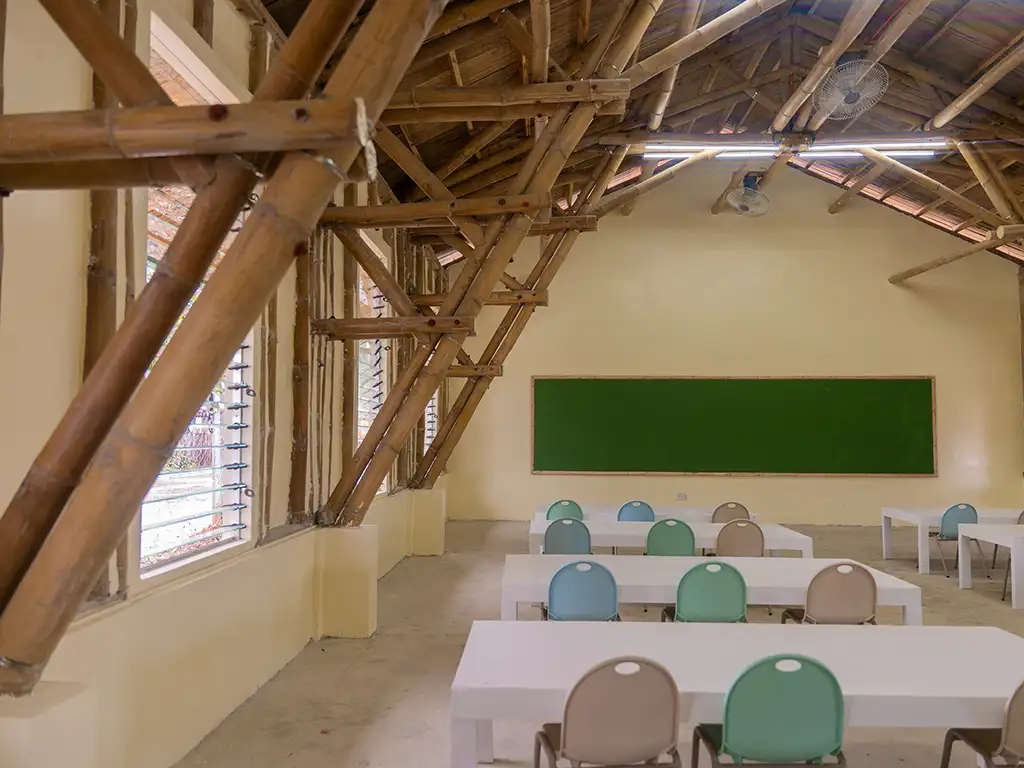
Bamboo in use by AH&H to rebuild St. Francis School in Northern Tacloban, the Philippines
A Sustainable and Accessible Material
Bamboo is a highly sustainable material, primarily due to its rapid growth rate. It can be harvested in just three years, much faster than most types of wood, which typically require 20 to 40 years to mature enough for lumber production. Bamboo is also grows naturally in the Philippines, making it easily accessible and reducing both transportation costs and climate-destructive energy consumption.
Bamboo helps keep buildings cool because it is lightweight, meaning it does not absorb as much heat as other building materials. Its hollow structure acts as a natural insulator, effectively keeping the heat out. Additionally, bamboo is a naturally flexible material, allowing it to bend rather than break under pressure.
This combination of sustainability and local availability makes bamboo an excellent, climate-friendly choice for construction in cyclone-prone areas.
Buildings Need More Than Just Bamboo
While the properties of bamboo itself have many benefits, building safe and sturdy structures with bamboo is slightly more complex. According to the Hilti Foundation, “For over 5,000 years, bamboo has been used as a cheap and accessible construction material in many countries of the Global South. However, pure bamboo structures are not durable enough to withstand the frequent disasters in the region, such as typhoons and earthquakes.” Therefore, engineered bamboo is required to make typhoon-resilient buildings.
In partnership with Base Bahay, an initiative created by the Hilti Foundation, AH&H is constructing school infrastructure with Cement Bamboo Framework Technology (CBFT), which bolsters bamboo with concrete and wood to create more durable buildings while still taking advantage of bamboo’s natural properties.
Luis Lopez, Head of Technology and Director of the Base Innovation Center at Base Bahay, describes the bamboo frame as having a “skin made of cement plaster, but this skin is only 2-3 centimeters of plaster…The bamboo is not embedded in concrete as some people think.” This greatly reduces the amount of concrete used, and when compared to a typical concrete house, a CBFT house produces 60% less carbon emissions. CBFT also enhances bamboo’s natural flexible properties, making it more durable. This enables bamboo structures to “withstand earthquakes of magnitude 7-8 and typhoons with winds of up to 300 km/h.”

Cement Bamboo Framework Technology: Image courtesy of Base Bahay
The bamboo itself is also prone to deterioration from exposure to termites and beetles, so Base Bahay uses treatment processes to ensure this doesn’t occur. By first washing the bamboo poles with water, they are able to remove the starch that the beetles like to eat. Next, the poles are sun-dried so that they can absorb as much of the treatment as possible. Finally, they are submerged in treatment consisting of either boron or peripherin solution, which rids and repels the termites. Since the poles are already clean and dried before submerging in treatment, the solution never needs to be replaced (only added to, as the poles absorb it), making this a zero-waste process. This method enhances the longevity and durability of the bamboo while ensuring a sustainable approach to material preparation.
On the Path for More Bamboo Usage
Building with bamboo has other societal benefits. It is 37-38% cheaper than a concrete house. The affordability of bamboo houses allows for greater social impact, as it enables more families to have access to safe, resilient housing. Building with bamboo also fosters a “circular economy” by supporting the bamboo farming industry and creating job opportunities throughout the treatment and construction processes. By demonstrating the durability and resilience of bamboo structures, AH&H’s CBFT construction projects are helping to pave the way for broader acceptance and incorporation of bamboo in mainstream construction.
If we want to further this societal impact, we must advocate for bamboo-based construction projects, support policies that encourage its use, and educate others on its numerous advantages.
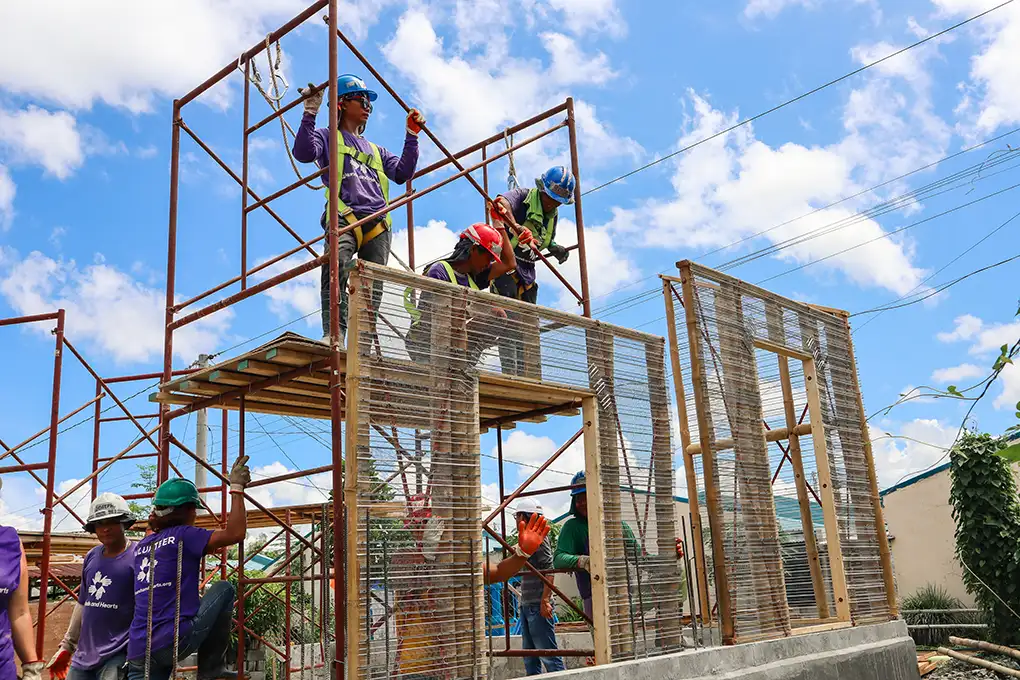

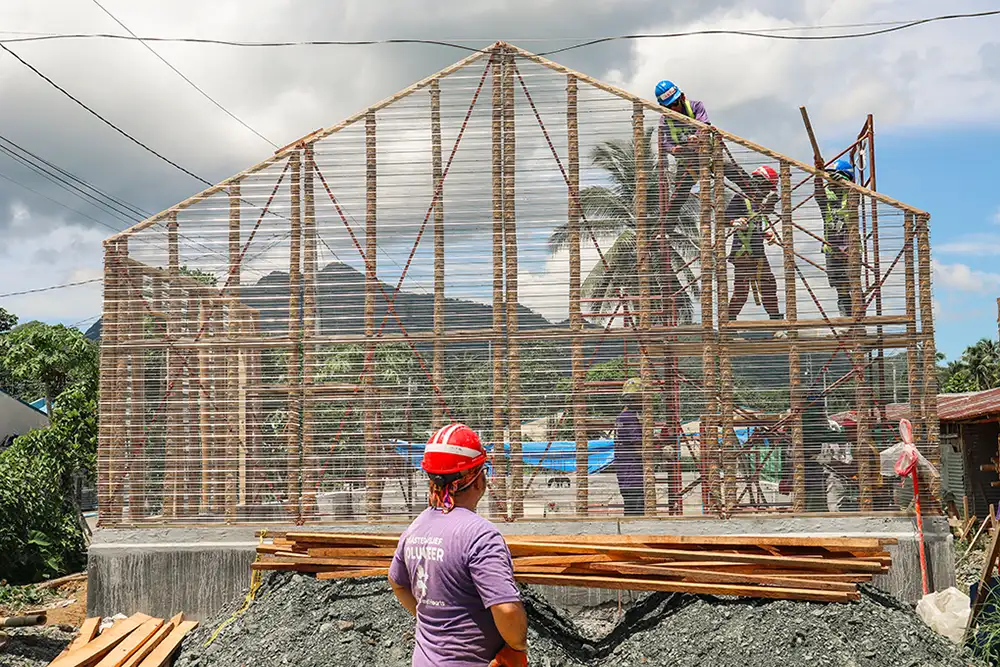
Building with bamboo: images from AH&H’s Philippines Typhoon Relief program
